A Match Made in Greek Legend: What Happened When Heracles Met the Snake Woman?
While completing his Twelve Labors, the Greek hero Heracles (a.k.a. Hercules) got up to tons of mischief—and that included bedding a lot of women. In the process, he fathered a whole host of legendary sons, called the Heracleidae, from whom many clans across the Mediterranean claimed descent. According to Herodotus, the “Father of History,” the Greeks living in Scythia—an area of Central Eurasia—were descended from one of Heracles’s most interesting sons.
Heracles Meets a Half-Human, Half-Serpent Mate
The Greeks who lived on the Black Sea (a.k.a. “Pontic Greeks”) created a founding myth directly tied to their homeland. During Heracles’s tenth labor—capturing cattle belonging to the monster Geryon—the hero arrived in what would eventually become the fertile land of Scythia, then a desert. Geryon himself lived on an island, so Heracles decided to rest up before sailing out to tackle him. He must have forgotten to tie up his horses, though, since they ran off while he was asleep.
- Theagenes of Thasos: From Legendary Olympic Fighter to God-Healer
- A Man-Eating Hog? Meet the Crommyonian Sow
- Tattooed Scythian Warriors, Descendants of the Amazons? Part One
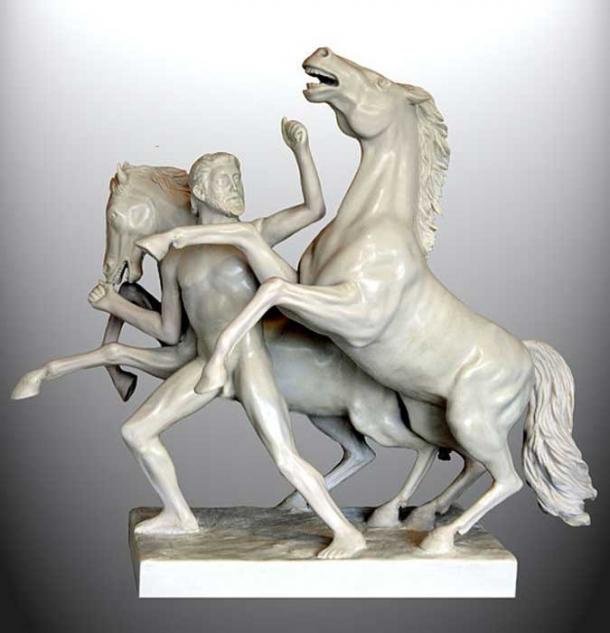
Heracles and the Horses of Diomedes. (Public Domain)
While searching throughout Scythia, Heracles came across an area called “The Woodland.” In that cave, he discovered a hybrid creature whose upper half was that of a human woman, but her bottom half was 100% pure snake. Both she and the famed Greek monster Echidna, mother of the likes of the Sphinx and Cerberus, were half-snake, half-woman. Our viper madam was never given a first name, so she’s more likely an echidna, not the Echidna.

Echidna. Sculpture by Pirro Ligorio 1555, Parco dei Mostri (Monster Park), Lazio, Italy. (Gabriele Delhey/CC BY SA 4.0)
Heracles asked this unusual half-human, half-serpent if she’d seen his horses; she said she was hiding them, but would only give them back if he had sex with her. Emotional and sexual blackmail? Par for the course for Greek mythology, Heracles agreed to the bargain, but the snake woman was so into him that she pulled a Circe and tried to keep him there forever by refusing to return his horses.
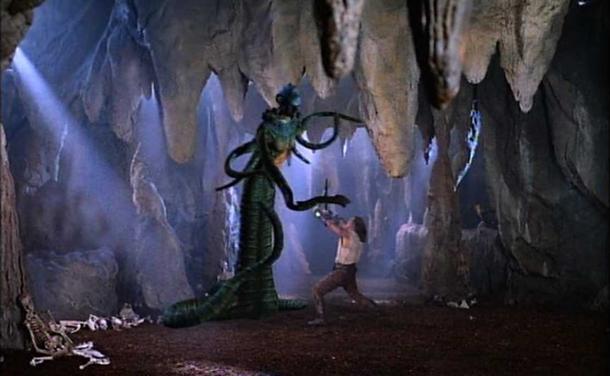
An Echidna fighting Hercules in the TV program ‘Hercules: The Legendary Journeys’. (CC BY SA)
Eventually, he got really annoyed—and then she told him she was pregnant! The snake lady said she had three of his sons in her belly and asked the hero what she was supposed to do with them when they grew up. Heracles gave her a belt with a golden goblet hanging from it and a big bow. He told her that, when they were adults, the youths should all try to draw the bow and put the girdle on; whoever drew the super-stiff bow and wore the girdle best would inherit her land in Scythia. The other ones, she should send away.
- The Dangerous Danaids: Meet 49 of the Most Murderous Royals in Greek Myth
- Taraxippus, the Terrifying Horse Scarer: Apparition Appeared Across Racetracks in Ancient Greece
- Kenneth MacAlpin: King of the Picts and Legendary Founder of Scotia
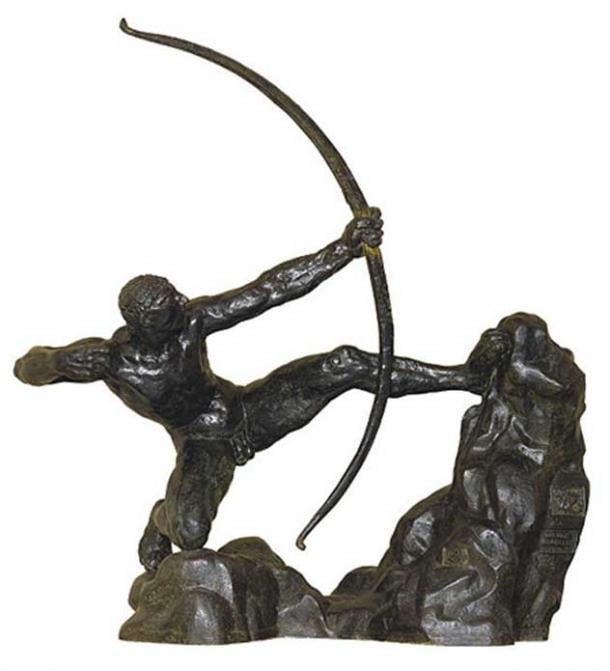
Heracles drawing back his bow. (Public Domain)
Heracles’ Three Sons with the Snake Woman Compete
Years later, the snake woman’s three sons grew up into nice young men. The oldest was Agathyrsus, the second Gelonus, and the youngest Scythes. The eldest two guys couldn’t draw their dad’s bow or put his belt on properly, so their mom banished them, but little Scythes was able to do the job.
Scythes went on to found the kingdom of Scythia, and, as Herodotus claimed, “from Scythes, the son of Hercules, were descended the after kings of Scythia.” And those very monarchs also wore belts with goblets hanging from them, in the tradition of their legendary ancestor.
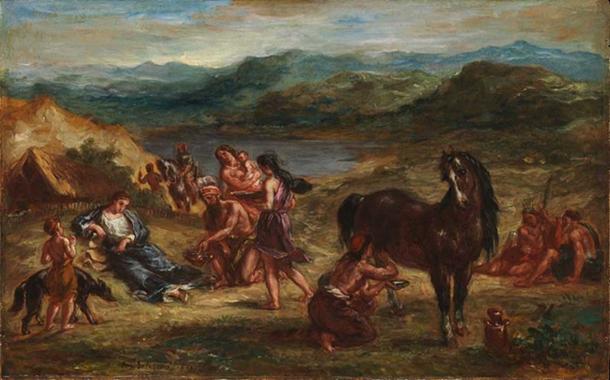
‘Ovid among the Scythians’ (1862) by Eugène Delacroix. (Public Domain)
And Agathyrsus and Gelonus fathered tribes named after themselves in the same general area; not bad for failures. Interestingly, some medieval Irish chroniclers traced the ancestry of the Picts, a confederation of tribes in what is now Scotland, to the Agathyrsi and Geloni.

Hand-colored version of Theodor de Bry’s engraving of a Pict woman (a member of an ancient Celtic people from Scotland). De Bry’s engraving, “The True Picture of a Women Picte.” (Public Domain)
Top Image: ‘Heracles and Omphale’ (1724) by François Lemoyne. (Deriv.) (Public Domain) Like the Echidna, mythology counts Omphale as another of Heracles’ lovers.
By Carly Silver
Bibliography
Ghenghea, Alexandra. “The Ethnic Construction of Early Iron Age Burials in Transylvania. Scythians, Agathyrsi or Thracians?” Fingerprinting the Iron Age: Approaches to Identity in the European Iron Age: Integrating South-Eastern Europe into the Debate. Edited by Cătălin Nicolae Popa and Simon Stoddart. Haverton, PA: Oxbow, 2014.
Herodotus. The History of Herodotus. Translated by George Rawlinson, Henry Rawlinson, and J.G. Wilkinson. Vol. 3. New York: D. Appleton and Company, 1882.
Miles, Brent. Heroic Saga and Classical Epic in Medieval Ireland. Rochester, NY: D.S. Brewer, 2011.
Ogden, Daniel. Dragons, Serpents, and Slayers in the Classical and Early Christian Worlds: A Sourcebook. New York: Oxford University Press, 2013.















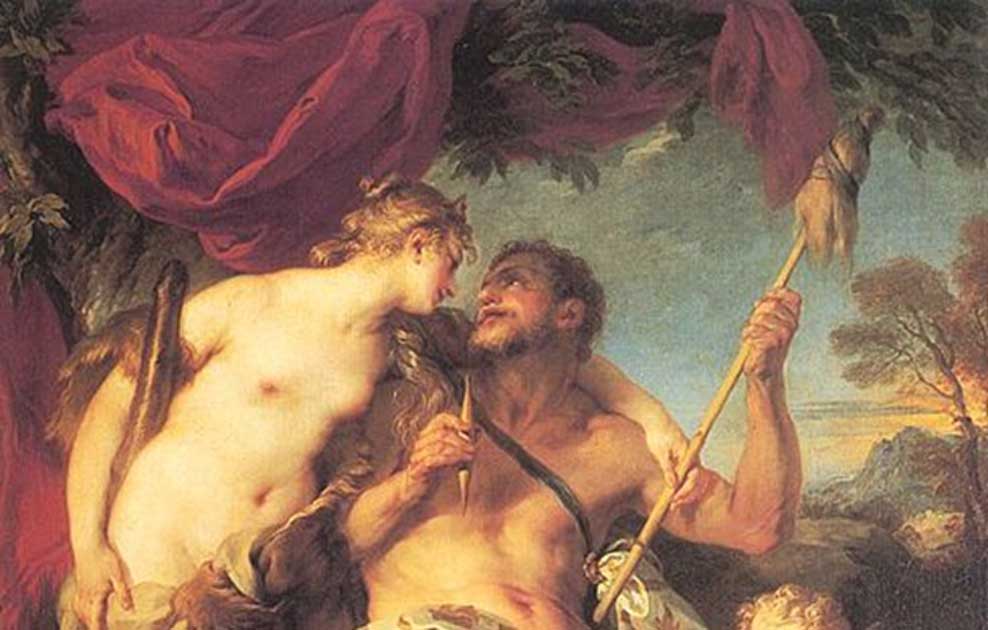

Comments
So the "mythical" story merges into reality, starting with a superhuman warrior and a snake woman and ending with three actual tribes of people. To me this indicates the myth is real history, condensed into symbols.
So what is the real meaning of the snake woman, or Heracles himself?